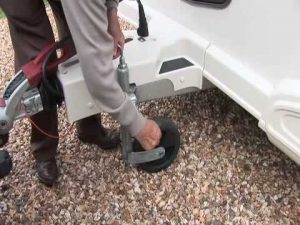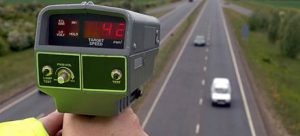How To Tow A Caravan
You may be thinking about getting a caravan for the first time but the prospect of having to tow it behind your car can be a scary prospect. It doesn’t have to be and with a bit of practise and maybe some tuition you could soon be touring the continent with confidence.
Simple Steps:
- Getting Started
- Packing your caravan
- Hitching your caravan
- Driving tips
- Pitching & Snaking
- Servicing and Maintenance
Top Tips: The Motorhome and Caravan Show which is held at the NEC in Birmingham normally has a test driving facility where an instructor will give you some tips on towing and other large caravan shows have a similar opportunity.
Caravan dealers will often offer to take you out for a lesson if they think that you may buy one, so take advantage if they do.
Another really good suggestion is to take a Manoeuvring Course with The Camping and Caravanning Club which will give you all the information and confidence to get started.
Getting started with towing a caravan
Before you get hitched up to your shiny new caravan there are several things to consider to ensure that you and your family are safe and that you comply with the law.
First you need to double check that your towing vehicle is man enough for the caravan you have in mind otherwise you may find that you will be buying a new car as well, just to tow your new purchase. So it’s worth doing your homework properly.
Every vehicle has a specific towing capacity which you will find in the handbook and you must not exceed this. Find out the gross weight of the caravan and add the approximate weight of your belongings to give you a total weight to compare to the maximum towing capacity recommended by the manufacturer of your vehicle.
A second rule of thumb is to check that the total weight of the load being towed should not exceed 85% of the gross vehicle weight of the towing vehicle. The “kerb weight” is the weight of the vehicle plus 75kg to allow for passengers and add a tank of petrol. This is to prevent the “tail wagging the dog”!
Packing your caravan
 When packing your belongings you must make sure that nothing projects outside and that you distribute the weight evenly so that it doesn’t affect the handling whilst being towed. If overloaded to one side or if you have too much at the front or the back or you can make it seriously unstable and dangerous to tow.
When packing your belongings you must make sure that nothing projects outside and that you distribute the weight evenly so that it doesn’t affect the handling whilst being towed. If overloaded to one side or if you have too much at the front or the back or you can make it seriously unstable and dangerous to tow.
Hitching up your caravan
Attaching your caravan to your car can be done on your own but is far easier if there is two of you. Get the seller to show how to hook your car up and remember to get a tow bar fitted, ideally with twin electrics so you can keep your fridge running and your battery topped up.
On the open road
Now that you are ready to go, find somewhere quiet to practise. Perhaps you know of a disused industrial estate or use the empty end of the supermarket car park to try some parking and reversing. Get the hang of this first so that you are confident once faced with busy traffic or parking your caravan on site for the first time.
 Don’t forget that speed limits are often lower whilst towing so CLICK HERE to check current speed limits. You may also not use the outside lane of a motorway if it has three or more lanes unless instructed to do so.
Don’t forget that speed limits are often lower whilst towing so CLICK HERE to check current speed limits. You may also not use the outside lane of a motorway if it has three or more lanes unless instructed to do so.
Take things easy to begin with and remember to allow more time for braking especially when cornering because the momentum of the heavy caravan could cause you to jack-knife. Slow down as you approach the bend and then gently accelerate as you come out the other side.
Also bear in mind the extra length which will mean that you will have to take corners more widely than you would normally do in your car to make sure that you don’t clip the kerb or cut the corner and damage your caravan or an obstacle like a wall or tree.
We would recommend that you get some wing mirror extensions so that you have a good view of the rear of your caravan at all times but don’t forget to take them off when you detach your van as they are illegal if not towing.
Make sure that all the lights are working correctly on the back of your caravan so that they reflect what is happening on the back of your car. Make sure that the number plate conforms to British Standard and is illuminated. No cardboard signs with felt tip number plates please!
Whilst driving look out for large queues building up behind you as it would be polite to pull over from time to time to let traffic pass if you are causing an obstruction. Also be considerate when parking to ensure that you do no block in other drivers.
Pitching and snaking
This can be terrifying and steps should be taken to avoid the risk.
Snaking is where the caravan moves from side to side and this can become quite excessive and eventually starts to take the car with it causing loss of control and a potential accident waiting to happen.
Pitching is an up and down movement where the front of the caravan bounces vertically pulling the car’s rear up and down with it.
If we haven’t put you off caravanning yet just make sure you take note of the 85% rule that we mentioned earlier and get a towing vehicle man enough for the weight of your caravan. Also make sure that you distribute your belongings evenly so that the caravan is weighted evenly and so not easily de-stabilised.
Electronic and friction stabilisers are often fitted to modern caravans now, which can also help reduce the problems associated with snaking and pitching.
If you take all of these precautions you may still experience instability if passed too closely by a large lorry that creates air turbulence or a strong side wind can have the same effect.
If you do, try not to panic, do not brake or try to steer out of the problem. Simply take both feet off of the pedals and use the car’s engine resistance to brake the car slowly and stay in a straight line.
Do not try to steer out of it because it can make it worse and do not be tempted to brake unless you are going downhill in which case only brake very slightly.
Servicing and maintaining your caravan
Finally pay close attention to manufacturer’s instructions and manuals when it comes to servicing and maintenance of your towing vehicle and caravan, remembering to always check the tyre pressures of both before setting off to ensure maximum safety.



